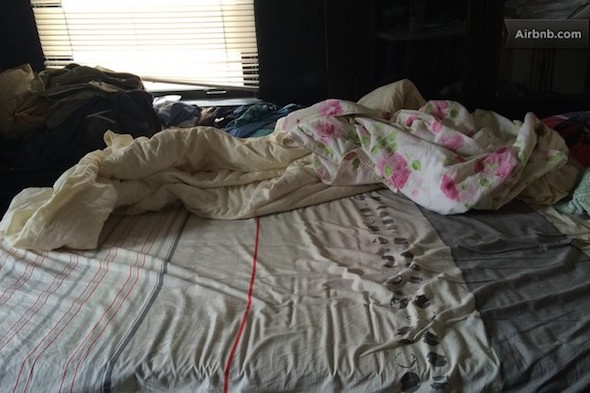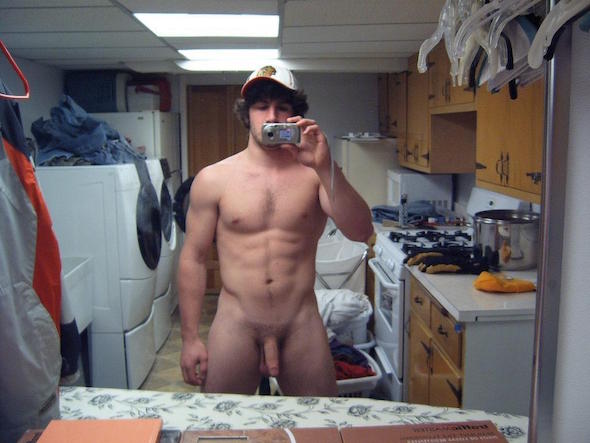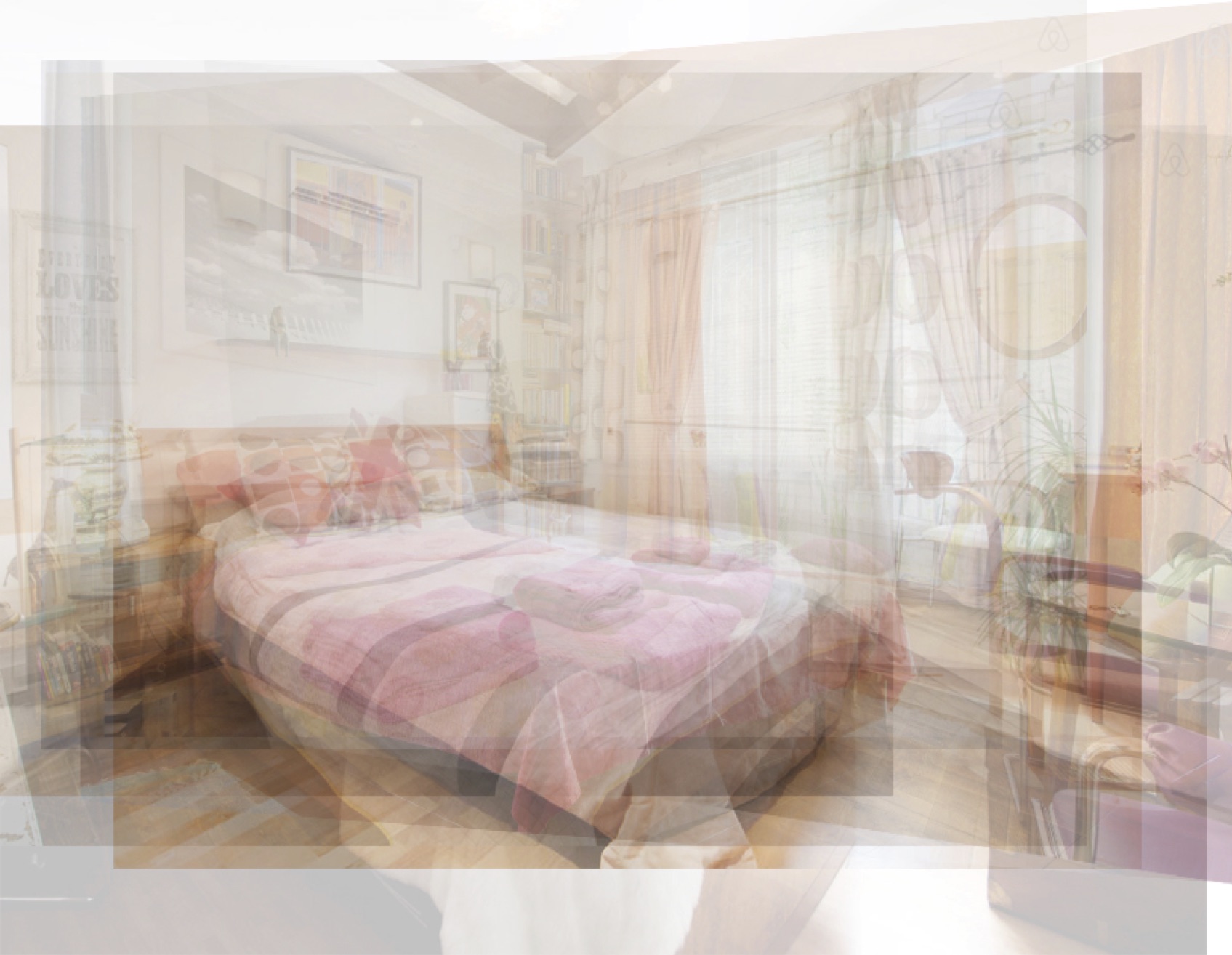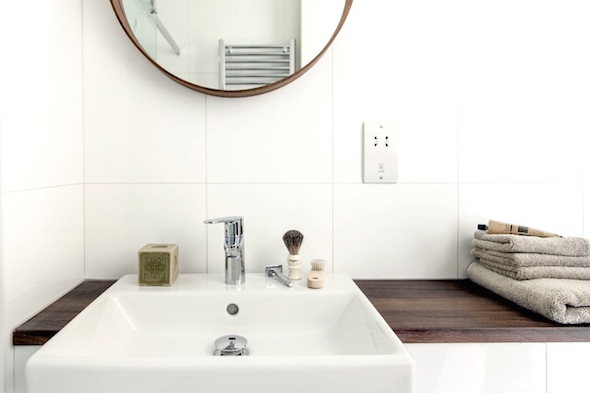
Marlie Mul, Dirty Soap Dish (Did you mean: naughty soap dish), 2014, courtesy of the artist.
(Welcome) Home: that daily practiced space and mental image which has accompanied mankind through centuries. Ever our shelter from the rain as much as the fortress of our dwelling selfs. The abode of our constructed identities and repository of our material treasures. Home is where the day begins, home is where it ends. Enduring with the clichés, home is where we belong; where we are safe from the daily struggles of the outside world. Home is among those universally accepted places which we refer to without specifying a geographical location or a defining activity. Where are you?—I'm home. It is as simple as it spells...
Like many other social constructs which have endured through centuries, though, the home is a concept in constant change: It varies in space and time according to personal experiences, to social models, to the political forces by which it is governed. And even more so, it varies in relation to the technologies in which it is enmeshed. At present, the internet falls into that long strand of innovations which, in one way or another, leave their mark on domesticity. Whether in its fostering of global mobility or in how it has blurred boundaries between public and private, the internet is progressively diluting those typically bourgeouis traits which have sedimented over the last few centuries and which still inform our current, westernized, understanding of the home as a stable entity.
Though much is being said about the effect of the internet on daily lives, a less visible topic is how the home appears on the WWW, and how this, in turn, shapes domestic architecture. The web has, in fact, allowed for new representations of the home to proliferate, and the effects of this effusion on the spaces we inhabit are far from obvious. If, on the one hand, the home's fetishized representations in commercial online practices such as real estate websites and IKEA catalogues are now deeply ingrained cultural conventions, an entirely different "way of seeing" the home is discreetly emerging in the less polished repertoire of amateur photography.
Here we can think of how the home makes its appearance in the casual selfie, the Snapchat, the Skype tour around the living room, leaked images of VIPs, amateur porn, Grindr profiles, and others— instances where home-ness is no longer performed for the capitalist mechanisms of property and exchange and is thus free from the pictorial conventions which ubiquitously characterise our epoch: wide angles, sleek surfaces and the highest possible resolutions. In these forms of representation the home is relegated to the background, is seen yet not appreciated as a home, even though its image is no way more spontaneous ("clean your room before you take your dick pic"); in these particular instances, the home amounts to the place in which another body stands and in this new, disguised position its connotative potential can be refreshingly disruptive.


Oscillating between the two, the website Airbnb proves to be a powerful case study in showing how particular modes of representation are forced upon its users as instrumental assets to global capital and its consumption-based economy. One need only to consider how its Photography Department came about to gauge the importance the medium has had in making the American company's experience-based enterprise financially productive:
One afternoon, the team was poring over their search results for New York City listings with Paul Graham, trying to figure out what wasn't working, why they weren't growing. After spending time on the site using the product, Gebbia had a realization. "We noticed a pattern. There's some similarity between all these 40 listings. The similarity is that the photos sucked. The photos were not great photos. People were using their camera phones or using their images from classified sites. It actually wasn't a surprise that people weren't booking rooms because you couldn't even really see what it is that you were paying for." …. The three-man team grabbed the next flight to New York and upgraded all the amateur photos to beautiful images... A week later, the results were in: improving the pictures doubled the weekly revenue to $400 per week. This was the first financial improvement that the company had seen in over eight months. They knew they were onto something. (Source)
That "something" is what Pablo Larios describes as "the doxa of digital circulation and image saturation" in contemporary image culture—i.e. "recognizability, translatability, clarity." In a nutshell, the company had to equip its users with a fairly uniform set of pictorial norms to make their homes an appetible commodity for its international service buyers.
"Taking crisp, well-lit and composed photographs that accurately convey the look and feel of the space is the most difficult part of creating a listing, so we make it easy." — Airbnb
The response to this exigency was the 2008 founding of Airbnb Photography—a free service provided by the company which users can apply for gaining "more visibility" (like), "verified watermarks" (like),  and "high quality" imagery (multiple likes) to better monetize their spaces. Ensuring higher rankings in search results and guaranteeing that an Airbnb representative has visited the property, a few years ago the company stated that hosts with professional photography would be "booked 2.5 times more frequently than those without," rendering it a vital component in Airbnb's business model.
Since its birth in 2010, Airbnb Photography has been performed by "experienced" freelance photographers from all around the globe hired on the basis of a portfolio and their capacity to match the standards required to be part of the company's iconographic stockpile. This is not to say that as photographers they have any degree of artistic license in the job—on the contrary, the images which are sent back to Airbnb's headquarters are heavily curated and subjected to a series of rather rigorous conventions involving make and lens of the camera used, brightness and contrast relations, lighting conditions and most strikingly a rather recurrent series of vantage points from which the photographs are taken. With the camera set up in one corner, Airbnb photographs often feature an expanse of floor in the foreground. Such photographs will make the apartment look at its most spacious when a room's furnishings are crowded in the far corner. Much has also been made of the website's predilection for photographs that are well-lit to the point of overexposure. Super-white walls always hold up best to overexposure.

Ioana Man, 30 listed bedrooms. London, Brighton, Paris, New York, Hong Kong, Mumbai.


In aligning to these doxas, the redundancy of Airbnb photography is characteristic of a series of conditions which are increasingly epitomic not only of how home-ness is represented in order to be commodified but even more of how our homes themselves are being affected by this imagery: most evidently, it highlights (and in so doing also fosters) the current homogenization of middle class households all around the world—something which is rendered in a similarly problematic way across the CGI renderings found in IKEA catalogues and other providers where particular room configurations and combinations of furnitures are applied unchanged to distinct hosting spaces. Of course there are exceptions to this norm which can be found in Airbnb listings such as the American trailer, the sailing boat, the tree house and other exotic venues, but if we limit our analysis to the general substratum (i.e. homes of middle class city dwellers on a relatively tight budget) the uniformity is very apparent. Airbnb sees such uniformity as an anomaly to correct, as a temporary impasse until every home on the website becomes highly individualized and "special," as acknowledged by Airbnb employees at the panel we organized at Swiss Institute. Given the aesthetic standards stringently imposed by the company, it is a highly circumscribed kind of individualism, one which "must be as special as possible, while remaining understandable as an image to an international audience of potential guests," as we wrote in a text for Fulcrum.
The sheer quantity of photographs Airbnb has collected since its Photography department was founded reinforces this condition while opening new perspectives on how the market operates. With over 3,000 photographers and more than a million photographs taken in the 192 countries the company operates in (2012), co-founder Gebbia unsurprisingly claims responsibility over the construction of what is "arguably one of the largest repositories of interior photography on the planet." If this momentous endeavour is reminiscent of early 20th century anthropological studies in which photography provided new descriptive means to show the world, Airbnb's agenda is of an entirely different sort. While that photographic genre was used to critique the miserable housing conditions of the working class, it also served a pedagogical function to teach us how to live (we can think of Walker Evans as much as post- war documentaries on the new middle-class households), Airbnb protects itself from the risk of being politically overt by certifying its pictures and ensuring that its merchandise remains morally decent. Its website, in this sense, can be termed as an interiorized cosmology where viewers can safely meander amidst a vast territory of verified (or, better, censored) material. In German philosopher Peter Sloterdijk's terms, a pampered space for contemporary globetrotters imbued with mainstream parochialism and "cosmopolitan romanticism."
The company's recent shift from a search-based model (you find what you need) to a browse-based one (you find as you wander) is not only symptomatic of how this new way of experiencing capitalist space operates; even more, it reflects the general diffusion across the whole of the WWW of a tumblr-ish modality based on immersive interfaces and erratic navigation. Think for example of how IKEA's interface has changed throughout the years to become more and more akin to a lifestyle magazine one skims through in a café rather than a furniture catalogue. Or of British Real Estate agency Foxtons' new Home Interior & Design Inspirations section where you can browse through listed properties according to the style in which they're built, the color on their walls or the features they present, independently of price and location.
But perhaps the determining factor which differentiates the image of the home on Airbnb from that on visually similar platforms is the enduring transience of the offers on display. The company's cofounder Brian Chesky (problematically) suggests that "today's generation sees ownership also as a burden. People still want to show off, but in the future I think what they're going to want to show off is their Instagram feed, their photos, the places they've gone, the experiences they've had. That has become the new bling." Analogous to how fashion and online shopping operate, the appreciation of the home or that of the objects which characterize it is freed from the burdens of property and immobility and now ventures into more volatile domains. What prevents Airbnb from building buildings is that its clients aren't interested in purchasing a house or its appliances, but the experience of an immediately disposable image which is nonetheless "authentic" and idiosyncratic. So that as much as you are renting a house or a room inside it, you are also renting an image of the host and their persona, their tastes, their biography. No wonder, then, the company's new policy is that of encouraging hosts to become even more "hospitable" attaching their own personality and habits to the trip experience, even as they (seemingly paradoxically) mandate a generic air of carefully censored "quality."

When Airbnb tells you "Belong everywhere," what it really reveals is that in our rarefied dwelling patterns, the contemporary urban dweller has long belonged Nowhere. If on the one hand this may be praised on the form of emancipation, on the other, mechanisms of expropriation - the primordial act at the origin of capitalism - have left us all in a state of permanent uprootedness, even when we are in our homes. It is as if man had finally inherited the properties of the commodities he's cherished: forever in flux and always present where they can be sold. To be able to feel home in any one's home, to be pleased when pseudo-appropriating the life of a stranger anywhere in the world shows what the home ever was: a myth, a dream. That theorist of the bourgeois interiors of the 19th century, Theodor Adorno, has less famously argued that being Modern was to be homeless, that Modern man was bound to be eternally looking for a home, a safer and more comfortable world to live in. If Adorno was using the home in a rather metaphorical way, the comparison adequately transposes to the homes we live in. It is disconcerting to realise that this "better world" which makes us wake up and work every day belongs to somebody else, or is computer generated. The artificiality and codification of the image of the home is the distracting safeguard which hides the real, carefully policed condition of housing. By producing its own home-image, one is tricked into the simulacra and becomes the catfish deceiving themselves into a more profound narcosis.

All that lies scattered in the brightness of the hall now bears
a single price,
each object enclosed in its soullessness.
Each thing cries out to us how young and important
it is, as wanton as cheapness feigning expense.
Oh the thing today no longer finds its
owner.For to be buyable means: having forgotten how to belong
to the living,
and buying means lightly inviting things
home,
like guests for a single occasion whom one greets,
uses,
and never regards again.Rainer Maria Rilke
ÅYR Pavilion is a project by fálo, a collective of interior decorators based in London founded by Fabrizio Ballabio, Alessandro Bava, Luis Ortega Govela, and Octave Perrault.

